By: debbie lynn elias
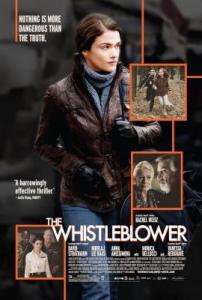
Kathryn Bolkovac is a name you may know, and if you don’t, you should. Bolkovac was at the center of an explosive exposure of human sex trafficking taking place in 1999 post-war Serbia and Bosnia. A Nebraska cop, divorced mother of three, after seeing a flyer come into her police department, Bolkovac signed up with contractor DynCorp to serve a tour of duty as a Bosnian peacekeeper. As part of a force of over 2000 men and women from 45 countries, it fell to many of the peacekeepers from the developed countries to not only “teach” Bosnian police democratic principles, but teach police procedures and everyday tasks such as using computers, writing reports, even something as routine as driving, to those individuals from the under-developed UN nations participating in the peacekeeping effort. What Bolkovac didn’t count on, however, was discovering that officers with DynCorp – and the United Nations – were well aware of the use of underage women, particularly girls aged 12-15, as being trafficked for sex in Bosnia. Making this discovery even worse, was seeing first hand that the activity was quite prevalent and many of the peacekeepers not only turned a blind eye to the situation, but were themselves on the take and assisting in the trafficking. Moving into the Women’s Right and Gender Unit under the helm of Madeleine Rees, Bolkovac was at the forefront of policing and combating trafficking, so it was no surprise when, after her investigations disclosed the vastness of the involvement in trafficking by the international police force, that she was fired on trumped up charges. A lawsuit for wrongful termination ensued and Bolkovac’s name was cleared….and the makings of THE WHISTLEBLOWER were born.
Enter first time feature director, Larysa Kondracki who, on reading about Bolkovac, knew this was an important story to tell, particularly given her own Ukranian roots. Struggling for several years to get the film made, it wasn’t until Rachel Weisz came into the picture that this fact-based political thriller, THE WHISTLEBLOWER, found life.

Calling on each of the elements of Bolkovac’s experiences, but concentrating the film on the trafficking issue (and adding some literary license), THE WHISTLEBLOWER opens in 1999 with Lincoln Nebraska police officer Kathryn Bolkovac trying to transfer to a Georgia police department. Her husband has gained custody of their teenaged daughter and is himself being relocated. Naturally, Bolkovac would like to move to the same area so that she can at least be closer to her daughter, but job transfers never come through.
Receiving a notice at the police station for a company looking for peacekeepers to do six-month stints in Bosnia for $100,000.00 tax free U.S. Dollars, Bolkovac sees this as her way out of Lincoln. With dreams of pulling her stunt and returning to the U.S. with cash in hand, able to set up house near her ex and daughter, Bolkovac jumps at the opportunity. But on arriving in Bosnia, neither the life, nor the job, are anything like she imagined.
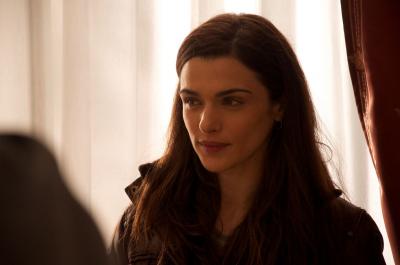
An unwanted woman in a man’s world, Bolkovac is the brunt of jokes, insults, sabotage and cruelty from her male counterparts before ultimately becoming a target of physical injury when she steps up trying to help Bosnian women who themselves are the victims of domestic violence. But it is this tender caring side of Bolkovac that appeals to Madeleine Rees, head of the U.N.’s Gender Office Human Rights Commission, who gets Bolkovac transferred to investigate sexual assaults and sex crimes. It’s during these investigations, and particularly in trying to help two young girls – Raya and Luba – that Bolkovac, perhaps in an effort to make peace within herself at losing custody of her own daughter, uncovers the widespread sex trafficking and the involvement and cover-up by not only her fellow peacekeepers, but the highest echelons of the U.N. and Internal Affairs. Knowing that she cannot abandon these girls, Bolkovac extends her Bosnian stay, putting her life in jeopardy to try and save those who cannot save themselves.
Rachel Weisz is not who one would expect to play the 5’10” husky Bolkovac and that’s a good thing, as it is Weisz’ petite stature that adds a vulnerability to Bolkovac that intensifies the gravity of the situation and the danger to Bolkovac, while also humanizing her with a visible tenderness and concern for the girls. And Weisz has this great ability to provide focal concentration in her characters that gives an appealing emotional intensity and ferocity that contradicts her physical demeanor, all to great affect. Notable is Weisz’ Mid-Western American accent which never falters.
A constant presence on set, Bolkovac, with her husband Jan Van Der Velde, played in the film by Nikolaj Lie Kaas, Bolkovac was particularly impressed with Weisz’ portrayal of her and her dedication to wanting to “get it right”, often stopping to consult with Bolkovac for accuracy of dialogue.
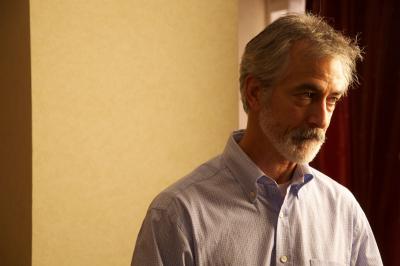
Vanessa Redgrave is superb as Madeleine Rees, adding a soft, but seasoned, sympathetic edge to the overall grit and grime of the film. Likewise, David Strathairn as U.N. Internal Affairs man and ally to Rees, Peter Ward, not only contributes to a softer emotional edge, but walks a fine line, keeping you guessing as to whether Ward can be trusted or not. Strathairn’s performance plays well into the corrupt minefield of the story.
Great standouts are Alexandru Potocean as Viko and David Hewlitt as the slime-oozing peacekeeper Fred Murray. Similarly, Roxana Condurache and Paula Schramm as victims Raya and Luba, respectively. Condurache in particular is riveting to watch. She has the most expressive face and conveys fear with a vulnerable vengeance.
Directed by Larysa Kondracki and co-written with Eilis Kirwan, THE WHISTLEBLOWER pulls no punches, going for the grit and grime, and more often than, horrifying visuals of sexual slavery and abuse. The visuals are far from candy-coated. One violent rape scene may even make you turn away from the screen due to its realism. The most well written scenes are those involving the trafficked girls, with nuanced detail in costume, make-up, bruising, and action. This is when one gets a real sense of the gravity of the situation. Contributing to superb visual affect is the work of Director of Photography Kieran McGuigan. With complex use of light and shadows, and a darkened, denatured palette contrasted with splashes of light, color and warmth in the Rees office, THE WHISTLEBLOWER maintains a constant seriousness and emotional darkness. Camera angles often obscure the action in the shadows to good metaphoric result.
Much appreciated is Kondracki shooting in Bucharest, thus giving visual authenticity that allows us to “wrap our heads” around the physical surroundings and nature of the war torn area.
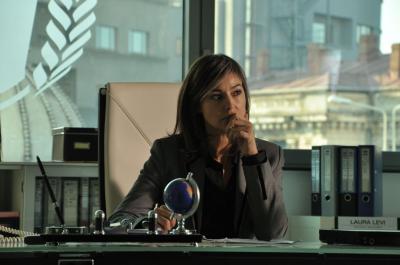
But there are problems with the film, not the least of which is some of the unbelievability of Kathryn Bolkovac’s character. If we go into this film knowing nothing about Bolkovac and are to believe the opening set-up, Bolkovac is a top-notch cop. She also lost custody of her daughter which right there raises questions as to her moral/character fiber. Yet, when we see her in Bosnia, basic police procedures are ignored and she appears more like a fish out of water or, in some instances, a rogue, neither of which comport with a supposedly strong intelligent woman. This is so disconcerting so as to have me wondering for much of the film did Bolkovac get picked for the Gender Office position because she wasn’t that bright and they thought that could “put one over on her.” Underwritten is the relationship between Bolkovac and Van Der Velde who, as we learn in the post-script credits, are now married.
Also sorely lacking is heightening tension. This is supposed to be a thriller with convoluted intrigue. That mandates tension and urgency. Neither is here. Although Julian Clarke’s editing is exemplary, the film never achieves a sense of urgency as the clock ticks down for the enslaved girls or for Bolkovac, leaving the film with a flatness. The most suspenseful (and horrifying)sequences boils down to those spotlighting the chained and enslaved girls, cringing in corners trying to avoid beatings and rapings, or taking nail files and scratching their names in cement floors with tick marks counting down the money they have to work off until they are “freed” (which of course doesn’t happen but which they are repeatedly promised).
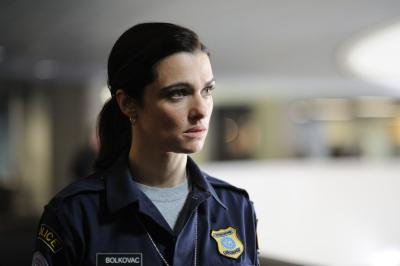
For Bolkovac, while the human trafficking is a serious human rights issue, what also concerns her are the “unfair employment practices and corruption” of these contractors when hiring people for overseas jobs, something that she would like to see rectified and improved upon, and is hoping that the publicity from THE WHISTLEBLOWER and the human trafficking spotlight will open eyes to all of the problems war inflicts upon the world.
Kathryn Bolkovac – Rachel Weisz
Madeleine Rees – Vanessa Redgrave
Peter Ward – David Strathairn
Directed by Larysa Kondracki. Written by Kondracki and Eilis Kirwan based on the book “The
Whistleblower” by Kathryn Bolkovac.











